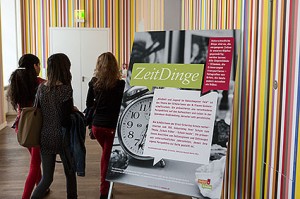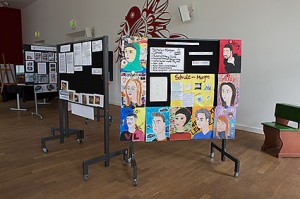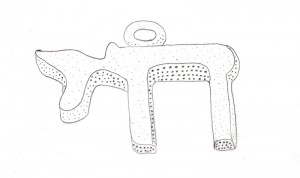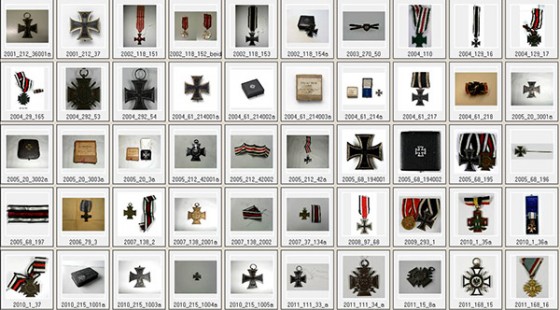Stories from the Student Exhibition “TimeThings”

Students exhibition “TimeThings”
© Jewish Museum Berlin, photo: Ernst Fesseler
Some may ask themselves why, from May 29 to June 1 at the Jewish Museum Berlin, there was a little exhibition of students’ work that had nothing to do with ‘Jewish subjects.’ I would like to answer this question: since last summer, we have been working with three Berlin schools to reinforce positive ways to handle ‘diversity‘ as well as cultural heterogeneity. We advocate creative forms of work that offer the possibility for individual development. That is why we gave the schools an opportunity to conceive with their students of an exhibition that would actually be shown in the museum. As an open-ended, overarching theme we chose ‘Time,’ in order to leave the participants with a lot of latitude.

Students exhibition “TimeThings”
© Jewish Museum Berlin, photo: Ernst Fesseler
As the project leader I was only seldom directly involved in the implementation. I was thus surprised and impressed by the diversity of themes and objects on display. Two pieces struck me in particular and I would like to share their stories: → continue reading

The Involuntary Moose
Last summer, a snigger went viral in the Jewish online community when an eBay entrepreneur posted a pendant of a Navajo moose. Labeled a “Unique Vintage Navajo Moose 925 Sterling Silver Pendant, marking 0.8 grams,” the trinket for sale was in fact a Jewish amulet depicting the Hebrew word “chai” for “life/living.” The motif is popular in Jewish jewelry. It consists of the two letters chet and yod and is not commonly mistaken for an animal. But this particular example simplified the letters and joined them together, which made them appear, quite truly, like an antlered moose in Native American style. → continue reading
The Jewish Museum is located in the well-known Berlin neighborhood of Kreuzberg, which is also home to a 66-meter high hill that gave the district its name in 1920: Kreuz meaning ‘cross’ and Berg ‘mount’ or ‘hill’. A monument designed by Friedrich Schinkel had been erected there about 100 years prior in memory of the war of liberation from Napoleon. On top it has always been bedecked with an Iron Cross. Prussian King Friedrich Wilhelm III first endowed the building of the monument 200 years ago, on 10 March 1813, the birthday of his late Queen Luise. A drawing of Schinkel’s design for the Iron Cross has been passed down to the Kupferstichkabinett’s collection (Museum of Prints and Drawings). In 1870 and 1914 respectively, Emperors Wilhelm I and II made subsequent endowments of the Iron Cross for particular service by German soldiers.
Numerous Iron Crosses can be found in the Jewish Museum’s collection, in many cases together with the respective certificates.

Iron Crosses in Kreuzberg – view of the object data bank of the Jewish Museum
© Jewish Museum Berlin
They nearly all date from the time of the First World War, in which around 100,000 Jewish soldiers participated on the German side. Among them were Julius Fliess (1876-1955) and Max Haller (1892-1960), whose medals are now in the Jewish Museum’s possession. → continue reading



